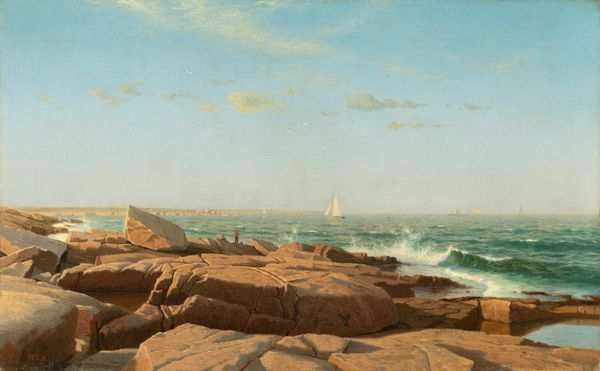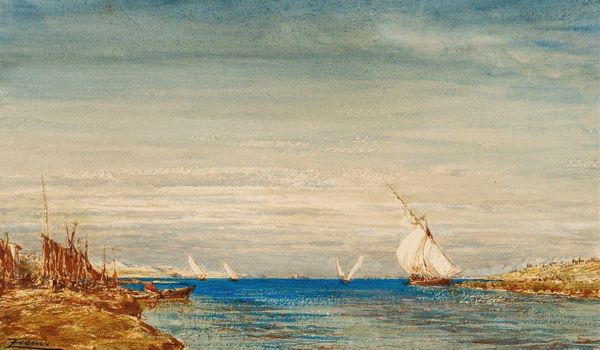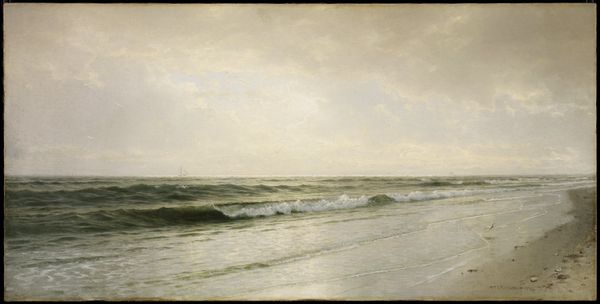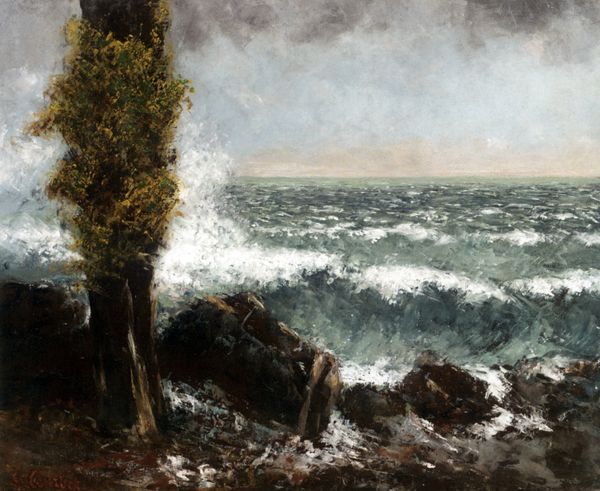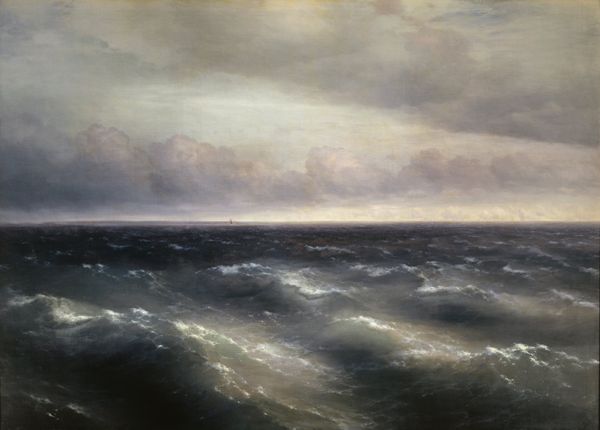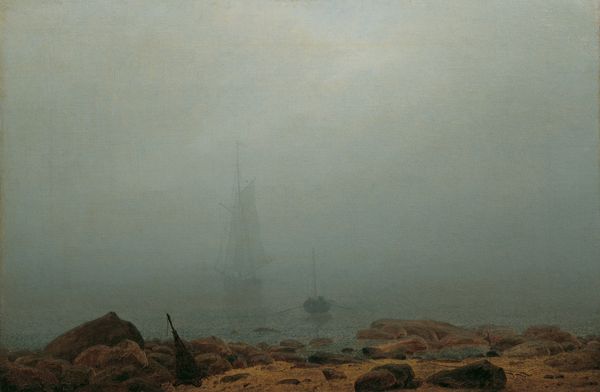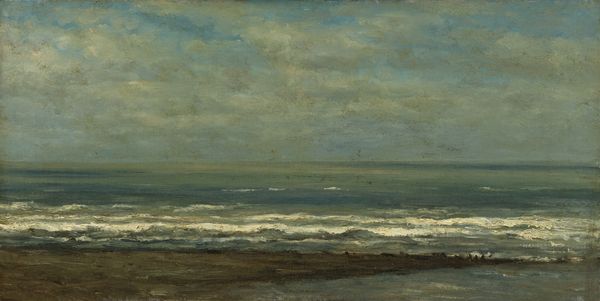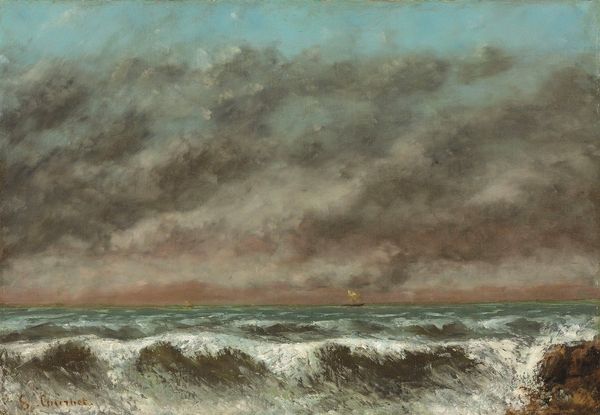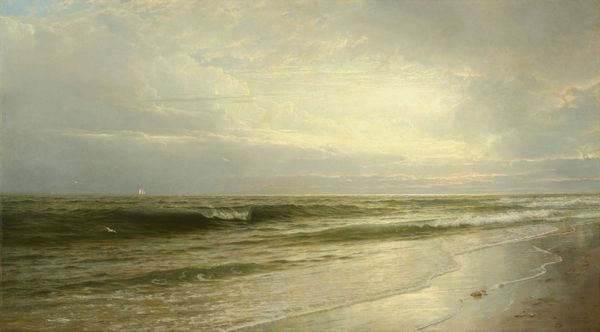
painting, oil-paint
#
painting
#
oil-paint
#
landscape
#
hudson-river-school
#
realism
#
sea
Dimensions: 15 1/2 x 30 1/2 in. (39.4 x 77.5 cm)
Copyright: Public Domain
Curator: Standing before us is John Frederick Kensett's 1872 canvas, titled "The Sea," residing here at the Metropolitan Museum of Art. Editor: It evokes a sense of melancholic vastness, wouldn't you agree? The muted palette contributes to this rather somber atmosphere, amplified by the expanse of sky. Curator: Certainly. Kensett, affiliated with the Hudson River School, here presents a nuanced study of light and atmosphere. Note the composition—the placement of the horizon line, almost bisecting the canvas, emphasizing the horizontal stretch and imparting a sense of calm monumentality. Editor: But that apparent serenity feels loaded, almost unsettling. Consider the historical context: The 1870s were marked by significant economic and social upheaval in the United States post-Civil War. Does the painting allude to a nation grappling with immense change and loss? A ship barely visible at the horizon may also signal voyages from the old to the new continent? Curator: I would posit that attributing a precise political narrative might be limiting. Look at how Kensett employed a limited tonal range; the variations of gray and blue in the water, along with the red, brown, and subtle green in the lower corner. Each layer conveys meticulous attention to detail—to form itself. Editor: Yet the limited palette also points to a period defined by widespread anxieties linked to migration, rapid urbanization, and labor struggles. These landscapes weren't neutral spaces. For me, those barren foreground rocks aren't merely compositional elements. It’s also about considering who had access to that coastal view, and who did not. Whose labor constructed the very railroads and ships that defined American expansion? Curator: While I recognize the potential interpretations tied to socio-historical narratives, focusing solely on them overshadows the inherent qualities of Kensett’s work: the way he captured that atmospheric luminosity, for instance, or the brushwork which provides structure and stability to the water. It speaks of the eternal—transcending ephemeral political anxieties. Editor: Perhaps we are both witnessing different facets of the same truth here—a sea of possibilities in a time of shifting realities, or perhaps just a beautiful painting. Curator: Indeed. Kensett offers us not just a depiction, but an experience, that is open to interpretation through formal properties, history, and time.
Comments
No comments
Be the first to comment and join the conversation on the ultimate creative platform.


